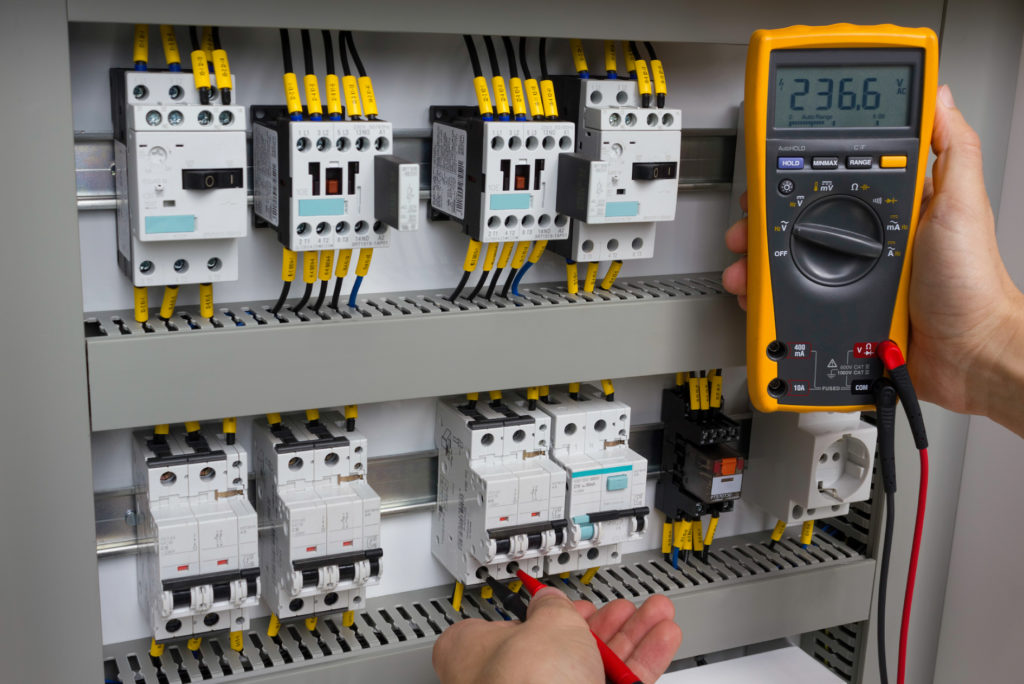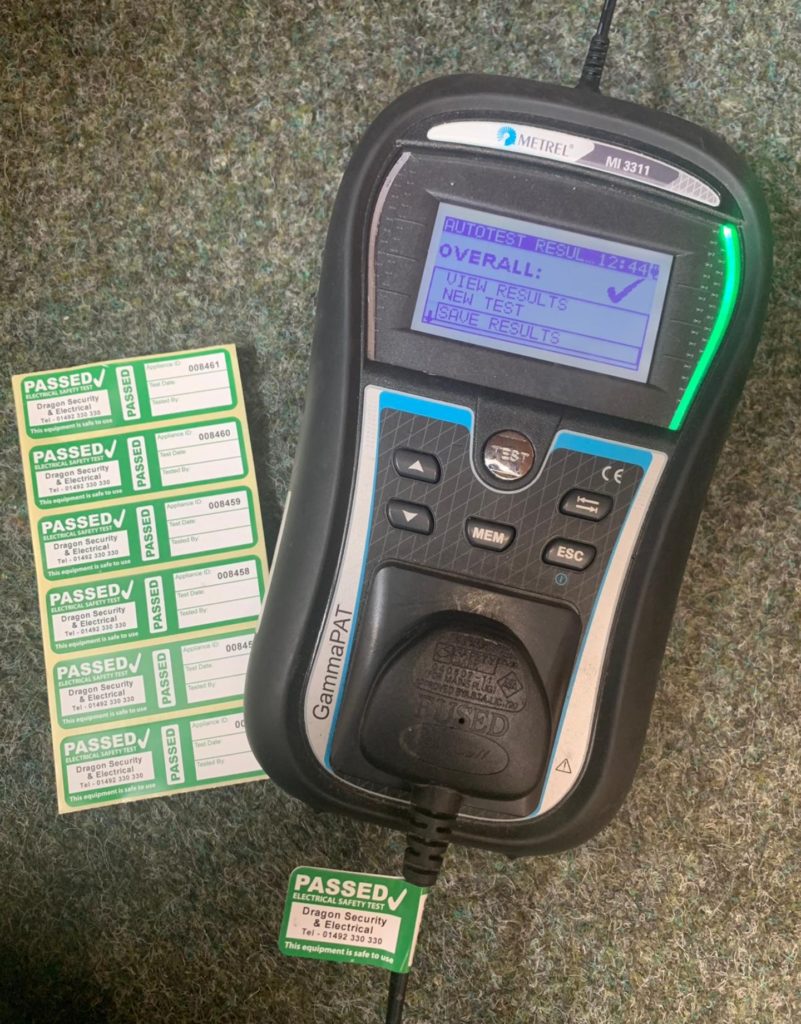Electrical Solutions
OUR EXPERT TEAM PROVIDE PROFESSIONAL ELECTRICAL SERVICES TO BOTH DOMESTIC AND COMMERCIAL CLIENTS.
At Dragon Security & Electrical we are NIC EIC Approved Contractors. Our team takes great pride in our knowledge and experience in the electrical industry, allowing us to work on smaller domestic matters and large-scale commercial projects.

Let Us Direct You
Domestic Electricians
WE DEAL WITH ALL ELEMENTS OF DOMESTIC ELECTRCS, RANGING FROM NEW SOCKETS TO FULL REWIRE
All our work is approved by the NIC EIC – Domestic Installer scheme
Here at Dragon we offer a full range of domestic electrical services. Whether you need re-wiring, electric heating, new plugs, kitchen and bathroom electrics or anything in between, our team can help. All our work is Approved by the NIC EIC.



Commercial & Industrial electrical work
DRAGON SECURITY & ELECTRICAL PROVIDES COMMERCIAL ELECTRICAL SERVICES FOR ALL INDUSTRIES.
We have developed a fantastic reputation for providing effective and professional electrical solutions for commercial organisations of all sizes and industries. No matter what you need, we can help.

Emergency Lighting
DRAGON SECURITY & ELECTRICAL PROVIDES ALL SERVICES SUCH AS SUPPLY, INSTALL, MAINTANENCE AND TESTING FOR ALL INTERNAL AND EXTERNAL EMERGENCY LIGHTING.
Emergency lighting is an essential safety feature in buildings across the UK and many other countries. It serves several crucial purposes:
-
Safety during Power Outages: Emergency lighting provides illumination during power failures, allowing occupants to safely exit the building without stumbling or getting disoriented. This is especially important in areas like stairwells and corridors where a lack of light can pose serious safety risks.
-
Compliance with Regulations: In the UK, emergency lighting is required by law to ensure the safety of occupants in public buildings, workplaces, and other facilities. Regulations and standards such as the Regulatory Reform (Fire Safety) Order 2005 and British Standard BS 5266 specify the types of emergency lighting systems that must be installed and their maintenance requirements.
-
Fire Safety: In the event of a fire, emergency lighting helps guide people to fire exits and firefighting equipment, reducing the risk of panic and injury during evacuation. It also assists firefighters in locating and combating the fire.
-
Occupant Wellbeing: During non-fire emergencies like power failures or other incidents, emergency lighting ensures that occupants can move safely and calmly, reducing the risk of accidents or injury.
-
Building Accessibility: Emergency lighting helps maintain building accessibility during power outages or emergencies, ensuring that vital services like elevators and emergency equipment remain operational.
-
Liability Reduction: Properly maintained and functional emergency lighting can help building owners and operators reduce liability in case of accidents or injuries resulting from inadequate emergency lighting during an emergency.
In summary, emergency lighting is crucial in the UK (and elsewhere) for the safety and wellbeing of occupants in various types of buildings and is mandated by regulations to ensure compliance and minimize risks during emergencies.

Dragon Installed a wireless alarm at my property. The service I received and standard of workmanship was excellent. One other thing I liked was the communication from their team which was also very good indeed. Nothing seemed too much to ask. They also fitted a wireless doorbell which was very reasonable.

Periodic Inspection
& Testing – BS7671
PERIODIC INSPECTIONS AND TESTING IS VITAL FOR ANY DOMESTIC, COMMERCIAL OR INDUSTRIAL BUILDINGS TO ENSURE IT IS ELECTRICALLY SAFE.
All electrical installations deteriorate with age and use. Therefore, they should be inspected and tested at regularly to check whether they are in a satisfactory condition for continued use. Such safety checks are commonly referred to as ‘periodic inspection and testing’.
Periodic inspection and testing involve regularly assessing the safety and functionality of electrical systems and equipment to prevent hazards and ensure proper operation. Here’s a brief description:
Purpose: Periodic inspection and testing are essential safety measures to identify and address electrical issues, reduce the risk of accidents and fires, and maintain equipment reliability.
Frequency: It occurs at set intervals, like annually or every few years, depending on regulatory requirements and the type of installation.
Qualified Personnel: Trained electricians or engineers conduct the inspections and tests.
Legal Requirements: Many countries have regulations mandating these checks for compliance and safety.
Documentation: Detailed records are maintained for each inspection and test to track safety and compliance.
Key Elements: The process includes examining for wear, loose connections, overheating, proper grounding, and verifying the functionality of protective devices.
Testing Equipment: Specialized tools, such as multimeters and thermal cameras, help evaluate electrical components.
Safety Precautions: Stringent safety measures, like isolation procedures and PPE, protect personnel.
Report and Recommendations: A report is generated after each inspection with findings and suggested corrective actions.
Corrective Actions: Any issues discovered must be promptly addressed to maintain safety and reliability.
Follow-Up: Regular follow-up inspections ensure the effectiveness of corrective measures.
Looking for Security?
WE PROVIDE A WIDE RANGE OF SECURITY SOLUTIONS
PAT Testing
PORTABLE APPLICATION TESTING (PAT) IS AN IMPORTANT PART OF ANY HEALTH & SAFETY POLICY.
Prices start from £1.99p + vat Per Item (See terms & conditions)
Portable Appliance Testing (PAT) is a process used in the United Kingdom and some other countries to ensure the safety of electrical appliances in various settings, including homes, offices, and workplaces. The purpose of PAT testing is to identify potential electrical hazards and reduce the risk of electrical accidents, such as electric shocks and fires, caused by faulty or damaged appliances. Here’s some information about PAT testing:
- What is PAT Testing?
- PAT testing involves a series of visual inspections and electrical tests performed on portable electrical appliances and equipment.
- Who Can Perform PAT Testing?
- PAT testing can be conducted by trained individuals, including electricians, maintenance personnel, or dedicated PAT testing professionals.
- Frequency of Testing:
- The frequency of PAT testing depends on the type of equipment and its usage. Generally, higher-risk appliances or those used in harsh environments may require more frequent testing than lower-risk items.
- Types of Appliances:
- PAT testing covers a wide range of electrical appliances, including computers, kitchen appliances, power tools, extension cords, and more.
- Visual Inspection:
- The first step in PAT testing is a visual inspection to check for visible signs of damage or wear, such as frayed cords, exposed wires, or loose connections.
- Electrical Testing:
- Following the visual inspection, electrical tests are conducted using specialized PAT testing equipment. Common tests include:
- Earth Continuity Test: Ensures that the appliance is properly grounded.
- Insulation Resistance Test: Checks for damage to the insulation of the appliance.
- Leakage Current Test: Measures the leakage current to ensure it is within safe limits.
- Functional Test: Verifies that the appliance operates correctly.
- Following the visual inspection, electrical tests are conducted using specialized PAT testing equipment. Common tests include:
- Labeling:
- Appliances that pass the PAT testing process are labeled with a “Passed” sticker or tag. Those that fail are marked as “Failed” and should be taken out of service for repair or disposal.
- Documentation:
- Detailed records of all appliances, test results, and testing dates should be maintained as part of a compliance record.
- Legal Requirements:
- In the UK, PAT testing is not explicitly required by law, but it is considered a best practice to comply with health and safety regulations. Employers have a duty to ensure the safety of their employees and visitors.
- Costs:
- The cost of PAT testing varies depending on the number and complexity of appliances to be tested, as well as the provider you choose.
- DIY PAT Testing:
- In some cases, individuals or businesses with qualified personnel may choose to perform their own PAT testing. However, professional testing is often recommended for larger or more complex setups.
- Importance:
- PAT testing is essential for maintaining electrical safety and preventing electrical accidents. Regular testing helps identify and address potential hazards, protecting people and property.
Remember that specific PAT testing regulations and requirements may vary by country and region, so it’s important to consult with local authorities or electrical safety experts to ensure compliance with relevant.
The Health & Safety Executive states that 25% of all reportable electrical accidents involve portable appliances. The EWR place a legal responsibility employers to comply with legislation.


Ready to Talk?
DO YOU HAVE A BIG IDEA WE CAN HELP WITH?

